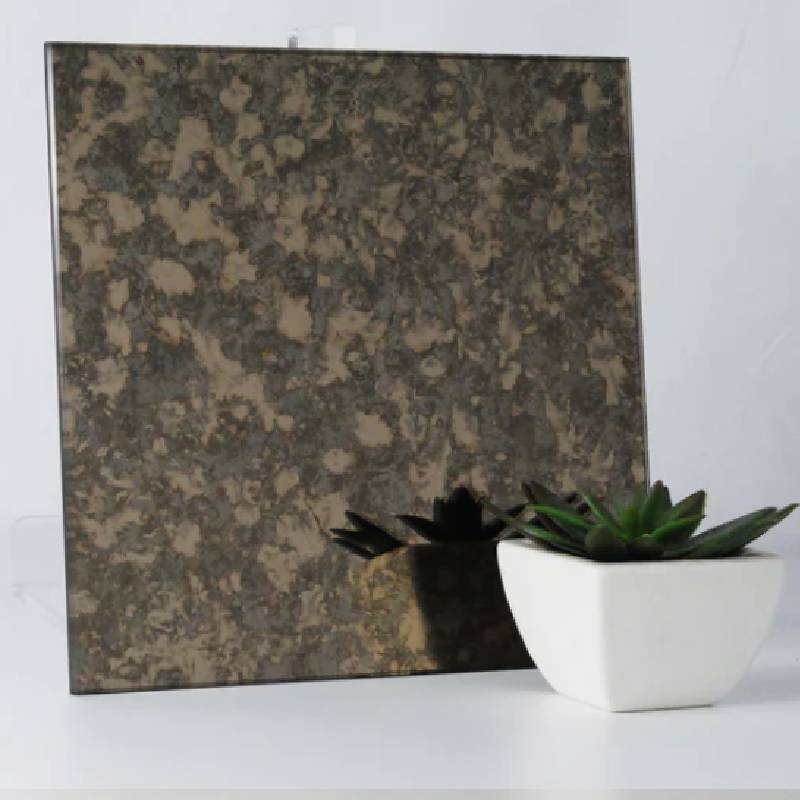The Process of Tempered Glass Production
Tempered glass, also known as toughened glass, is a type of safety glass that has been treated through a process of extreme heating and rapid cooling which increases its strength compared to regular glass. The manufacturing process of tempered glass involves several critical steps that ensure the final product is durable, shatter-resistant, and suitable for various applications ranging from residential windows to automotive uses. This article delves into the intricate steps involved in the production of tempered glass.
Step 1 Raw Material Selection
The production of tempered glass begins with the selection of high-quality raw materials. Standard glass is made from a mixture of silica sand, soda ash, and limestone. The purity of these materials is vital as impurities can weaken the glass and affect its transparency. Manufacturers may also add other materials like alumina or magnesium to enhance certain properties of the glass.
Step 2 Melting
Once the raw materials are selected, they are mixed and fed into a furnace where they are heated to extremely high temperatures, typically around 1,600 degrees Fahrenheit (about 870 degrees Celsius). This process allows the materials to melt and form a homogeneous glass melt. The temperature and duration of this melting phase are closely monitored to ensure uniform consistency and to eliminate any air bubbles or imperfections.
Step 3 Forming
After melting, the liquid glass is shaped into the desired form. Depending on the intended application, this can involve processes such as blowing, molding, or flat glass casting. In the case of tempered glass, the most common form is flat glass sheets. These sheets are cut from a larger pane and are then allowed to cool slowly in a controlled environment to maintain their shape and prevent warping.
Step 4 Annealing
process of tempered glass
Once the glass has been formed, it undergoes a process known as annealing. This step involves gradually cooling the glass in a controlled environment, which allows internal stresses to be released. This is crucial to avoid spontaneous breakage later in the glass's life cycle. The annealing process can take several hours, depending on the thickness of the glass.
Step 5 Tempering
The tempering process is where the glass earns its strength and durability. The annealed glass sheets are placed in a tempering furnace where they are heated to temperatures of around 1,200 degrees Fahrenheit (approximately 650 degrees Celsius). After reaching this temperature, the glass is rapidly cooled using jets of cold air. This process, known as quenching, creates a compressive stress on the surface of the glass and tensile stress within the core. The result is a glass that is significantly stronger than its untempered counterpart.
Step 6 Quality Control
After tempering, the glass undergoes a thorough quality control process. Various tests are performed to check for optical clarity, strength, and surface defects. This may include visual inspections, as well as more sophisticated techniques such as ultrasonic testing or laser scanning. It is essential that the glass meets industry standards before it is dispatched for use in construction, automotive, or other industries.
Step 7 Cutting and Finishing
Finally, the tempered glass sheets are cut to size and finished according to customer specifications. This can involve additional processes such as edge polishing, drilling holes for fittings, or applying specialized coatings for enhanced performance. Once the cutting and finishing are complete, the glass is prepared for shipment.
Conclusion
The production of tempered glass is a complex process that requires precision and expertise at every stage. From raw material selection to the final finishing touches, each step plays a crucial role in ensuring the glass is safe, durable, and suitable for its intended applications. As we continue to seek stronger and safer materials in construction, automotive, and other industries, the demand for tempered glass remains high, reflecting its importance in modern design and architecture.
 Afrikaans
Afrikaans  Albanian
Albanian  Amharic
Amharic  Arabic
Arabic  Armenian
Armenian  Azerbaijani
Azerbaijani  Basque
Basque  Belarusian
Belarusian  Bengali
Bengali  Bosnian
Bosnian  Bulgarian
Bulgarian  Catalan
Catalan  Cebuano
Cebuano  Corsican
Corsican  Croatian
Croatian  Czech
Czech  Danish
Danish  Dutch
Dutch  English
English  Esperanto
Esperanto  Estonian
Estonian  Finnish
Finnish  French
French  Frisian
Frisian  Galician
Galician  Georgian
Georgian  German
German  Greek
Greek  Gujarati
Gujarati  Haitian Creole
Haitian Creole  hausa
hausa  hawaiian
hawaiian  Hebrew
Hebrew  Hindi
Hindi  Miao
Miao  Hungarian
Hungarian  Icelandic
Icelandic  igbo
igbo  Indonesian
Indonesian  irish
irish  Italian
Italian  Japanese
Japanese  Javanese
Javanese  Kannada
Kannada  kazakh
kazakh  Khmer
Khmer  Rwandese
Rwandese  Korean
Korean  Kurdish
Kurdish  Kyrgyz
Kyrgyz  Lao
Lao  Latin
Latin  Latvian
Latvian  Lithuanian
Lithuanian  Luxembourgish
Luxembourgish  Macedonian
Macedonian  Malgashi
Malgashi  Malay
Malay  Malayalam
Malayalam  Maltese
Maltese  Maori
Maori  Marathi
Marathi  Mongolian
Mongolian  Myanmar
Myanmar  Nepali
Nepali  Norwegian
Norwegian  Norwegian
Norwegian  Occitan
Occitan  Pashto
Pashto  Persian
Persian  Polish
Polish  Portuguese
Portuguese  Punjabi
Punjabi  Romanian
Romanian  Russian
Russian  Samoan
Samoan  Scottish Gaelic
Scottish Gaelic  Serbian
Serbian  Sesotho
Sesotho  Shona
Shona  Sindhi
Sindhi  Sinhala
Sinhala  Slovak
Slovak  Slovenian
Slovenian  Somali
Somali  Spanish
Spanish  Sundanese
Sundanese  Swahili
Swahili  Swedish
Swedish  Tagalog
Tagalog  Tajik
Tajik  Tamil
Tamil  Tatar
Tatar  Telugu
Telugu  Thai
Thai  Turkish
Turkish  Turkmen
Turkmen  Ukrainian
Ukrainian  Urdu
Urdu  Uighur
Uighur  Uzbek
Uzbek  Vietnamese
Vietnamese  Welsh
Welsh  Bantu
Bantu  Yiddish
Yiddish  Yoruba
Yoruba  Zulu
Zulu 

